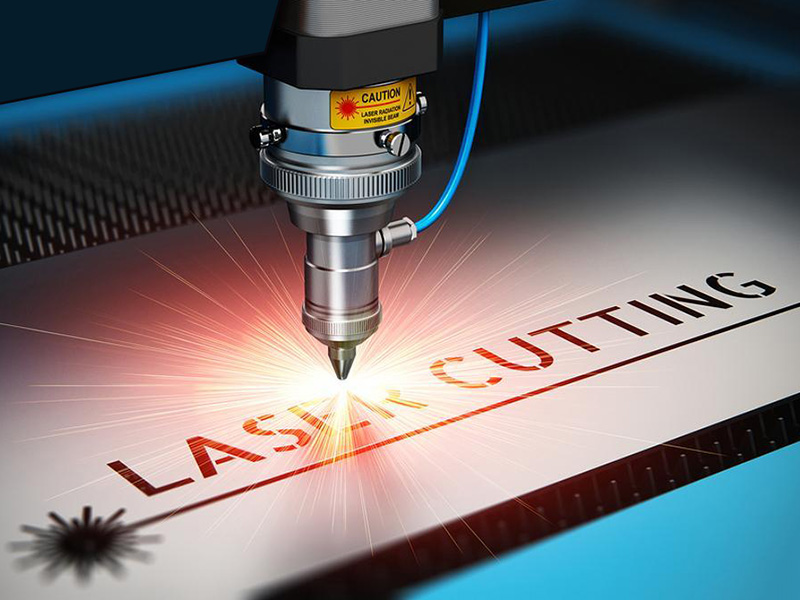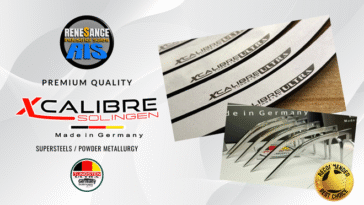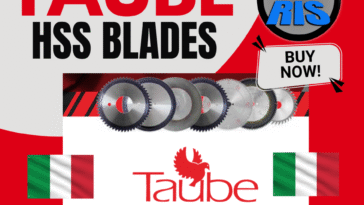Choosing the right cutting method is crucial in knife making, especially when working with high-performance or hardened steels. Two modern processes dominate the industry: waterjet cutting and fiber laser cutting.
Each method has unique strengths and trade-offs—but when it comes to knife steels, especially high-carbon, tool, and powder metallurgy steels, understanding these differences is essential for maintaining performance, edge integrity, and consistency.
This article compares both methods in detail, with a special focus on cutting gas choices in fiber lasers—compressed air, oxygen, and nitrogen—and which method is best suited for precision blade work.
🌊 Waterjet Cutting: Cold, Clean, and Versatile
Waterjet cutting uses a high-pressure jet of water and abrasive material to erode and cut through metal. Because it’s a cold-cutting process, it produces no heat-affected zone (HAZ)—a critical factor when working with heat-treated steels.
✅ Advantages
- No heat distortion – protects hardness and temper of blade steels
- Cuts any material – including hardened steels, titanium, composites
- Handles thick sections – capable of cutting over 100mm
- Preserves metallurgy – no microcracking, scaling, or edge damage
❌ Disadvantages
- Slower cutting speed, especially on thinner sheets
- Higher operating cost due to abrasives and water system
- Rougher edges – may require post-grind or polishing
- Requires more shop space
🔥 Fiber Laser Cutting: Fast, Clean, and Gas-Dependent
Fiber laser cutting melts and vaporizes steel using a highly focused beam of light. This method is fast, precise, and excellent for complex shapes—but it introduces heat into the cut, making the type of assist gas critically important.
🧪 Fiber Laser Assist Gases: Air, Oxygen, or Nitrogen?
The assist gas clears molten material and directly affects edge quality, speed, and the steel’s surface chemistry. Here’s how each performs:
Compressed Air
- Cheap and accessible
- Fine for mild steel and non-critical parts
- ⚠️ Can introduce oxidation, moisture, and inconsistent finish
- ❌ Not suitable for knife steels due to contamination and discoloration
Oxygen (O₂)
- Increases cutting speed via exothermic reaction
- Good for carbon steel and thick plate cutting
- ❌ Causes heavy oxidation and scaling
- ❌ Creates a wide heat-affected zone (HAZ)—bad for blades
- ❌ Alters microstructure—especially damaging to high-performance steels
Nitrogen (N₂)
- Inert gas—doesn’t react with steel
- Provides clean, oxide-free edges
- Produces a narrow HAZ, protecting blade hardness
- ✅ Ideal for stainless, tool steel, and hardened knife steels
- Slightly higher gas cost, but worth it for blade quality
⚖️ Summary Table: Waterjet vs. Fiber Laser (by Gas Type)
| Feature | Waterjet | Laser + Air | Laser + Oxygen | Laser + Nitrogen |
|---|---|---|---|---|
| Heat-Affected Zone (HAZ) | ❌ None | ⚠️ Mild | 🔥 High | ✅ Minimal |
| Oxidation/Discoloration | ❌ None | ⚠️ Present | 🔴 Severe | ✅ None |
| Cut Speed (Thin Materials) | ⚠️ Slower | ✅ Fast | ✅ Fast | ✅ Fast |
| Best for Hardened Steels | ✅ Yes | ❌ No | ❌ No | ✅ Yes |
| Edge Quality | ⚠️ Rougher | ⚠️ Average | ❌ Poor | ✅ Smooth |
| Cost Efficiency | ❌ Higher overall | ✅ Cheapest | ⚠️ Moderate | ⚠️ Higher gas cost |
| Ideal Use | Hardened & thick steel | Mild steel | Budget thick cutting | Knife steels, stainless |
🏁 Final Verdict: What’s Best for Knife Steels?
If you’re cutting pre-hardened, high-carbon, or PM-grade knife steels, waterjet cutting is your safest option—it preserves edge hardness and avoids all thermal damage.
However, for stainless or annealed tool steels under 10mm thick, fiber laser with nitrogen gas is a fast, efficient, and clean solution.
🧰 Renesance Offers Both Cutting Methods—Optimized for Knife Steels
At Renesance, we are proud to offer both abrasive waterjet cutting and fiber laser cutting to serve the needs of professional blade makers and industrial clients.
✅ For knife steels, we use nitrogen gas as our standard in fiber laser cutting to ensure oxide-free, precision cuts with minimal HAZ.
✅ For hardened or heat-treated steels, we recommend waterjet cutting to fully preserve metallurgical integrity.
📞 Need expert help or a cutting quote?
Visit renesancetech.com or message us directly on Facebook. Whether you’re working with HSS, Apex Ultra, or stainless, we’ll match the cutting method to your steel and your specs.




